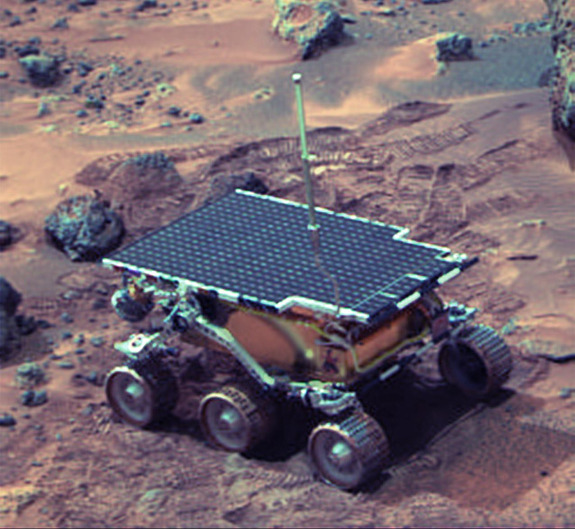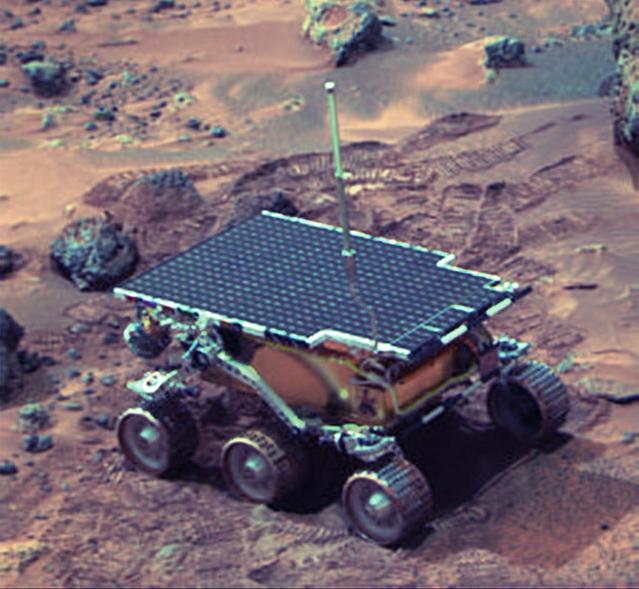
Mars Pathfinder
About
The Mars Pathfinder was designed to be a demonstration of the technology necessary to deliver a lander and a free-ranging robotic rover to the surface of Mars in a cost-effective and efficient manner. The Imager for Mars Pathfinder (IMP) was built at LPL by a team led by Peter Smith. Pathfinder not only accomplished its technical goal but also returned an unprecedented amount of data and outlived its primary design life. Mars Pathfinder used an innovative method of directly entering the Martian atmosphere, assisted by a parachute to slow its descent through the thin Martian atmosphere and a giant system of airbags to cushion the impact. The landing site, an ancient flood plain in Mars’ northern hemisphere known as Ares Vallis, is among the rockiest parts of Mars. It was chosen because scientists believed it to be a relatively safe surface to land on and one which contained a wide variety of rocks deposited during a catastrophic flood. The lander, formally named the Carl Sagan Memorial Station following its successful touchdown, and the rover, named Sojourner after American civil rights crusader Sojourner Truth, both outlived their design lives — the lander by nearly three times, and the rover by 12 times.. In the 2014 movie The Martian, stranded astronaut Mark Watney uses Pathfinder and IMP to communicate with Earth.



